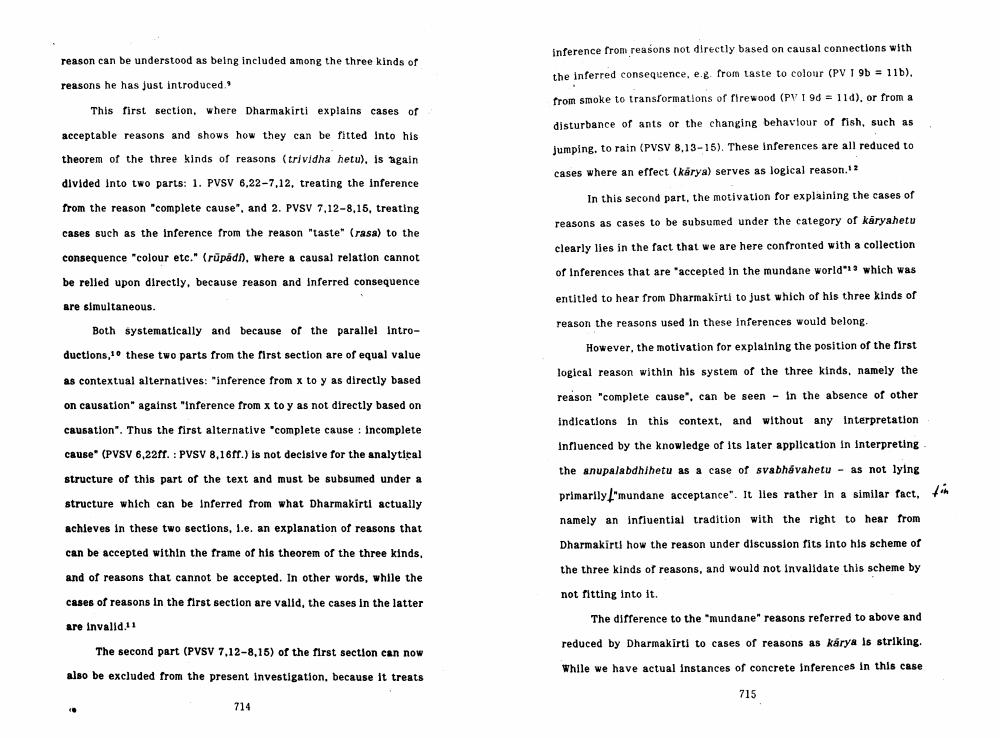________________
reason can be understood as being included among the three kinds of
inference from reasons not directly based on causal connections with the inferred consequence, e.g. from taste to colour (PV1 9b = 11b).
reasons he has just introduced
This first section. Where Dharmakirti explains cases of
from smoke to transformations of firewood (PY I 90 = 11d), or from a
disturbance of ants or the changing behaviour of fish, such as Jumping, to rain (PVSV 8.13-15). These inferences are all reduced to cases where an effect (karya) serves as logical reason.1?
acceptable reasons and shows how they can be fitted into his theorem of the three kinds of reasons (trividha hetu), is again divided into two parts: 1. PVSV 6,22-7,12, treating the Inference from the reason complete cause". and 2. PVSV 7.12-8,15, treating cases such as the Inference from the reason "taste" (rasa) to the consequence "colour etc." (rupid, where a causal relation cannot be relled upon directly, because reason and inferred consequence
In this second part, the motivation for explaining the cases of
reasons as cases to be subsumed under the category of karyahetu
clearly lies in the fact that we are here confronted with a collection
of inferences that are accepted in the mundane world'1' which was
are simultaneous.
entitled to hear from Dharmakirti to just which of his three kinds of reason the reasons used in these inferences would belong.
Both systematically and because of the parallel Introductions, these two parts from the first section are of equal value
as contextual alternatives: "inference from x to y as directly based
on causation against "Inference from x to y as not directly based on
causation". Thus the first alternative complete cause : incomplete
cause" (PVSV 6,221f.: PVSV 8,1611.) is not decisive for the analytical
However, the motivation for explaining the position of the first logical reason within his system of the three kinds, namely the reason "complete cause, can be seen in the absence of other indications in this context, and without any interpretation Influenced by the knowledge of its later application in Interpreting the anupalabdhihetu as a case of svabhavahetu - as not lying primarily I'mundane acceptance". It lies rather in a similar fact, namely an influential tradition with the right to hear from Dharmakirti how the reason under discussion fits into his scheme of
structure of this part of the text and must be subsumed under a
structure which can be inferred from what Dharmakirti actually achieves in these two sections, 1.e. an explanation of reasons that can be accepted within the frame of his theorem of the three kinds, and of reasons that cannot be accepted. In other words, while the
the three kinds of reasons, and would not invalidate this scheme by
cases of reasons in the first section are valid, the cases in the latter
not fitting into it.
are invalid.11
The difference to the mundane" reasons referred to above and
The second part (PVSV 7.12-8.15) of the first section can now
reduced by Dharmakirtl to cases of reasons as karya is striking.
also be excluded from the present investigation, because it treats
while we have actual instances of concrete inferences in this case
714
715




